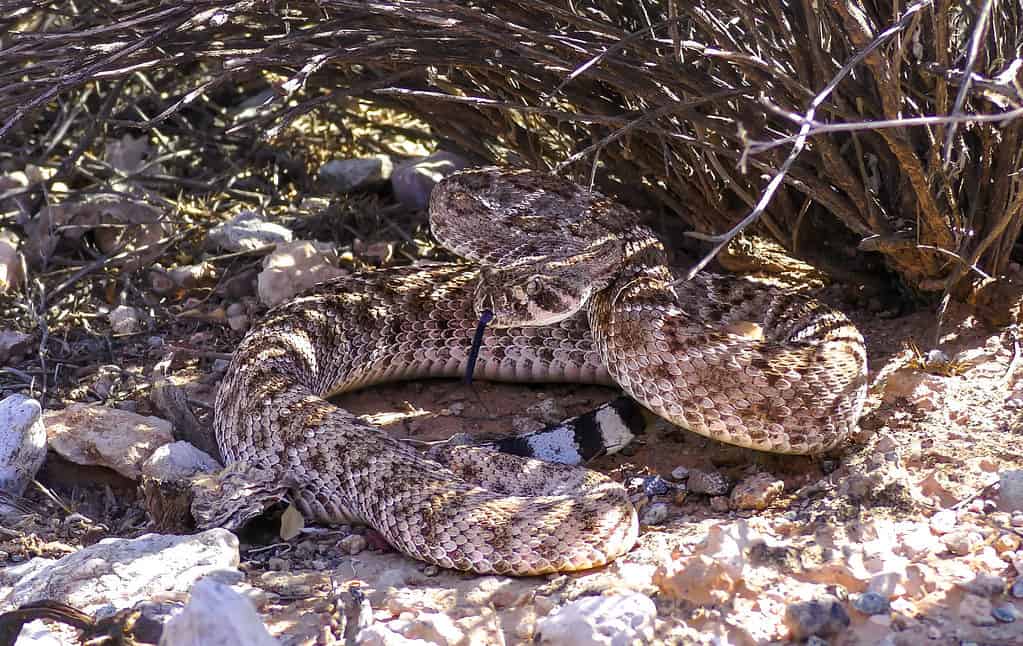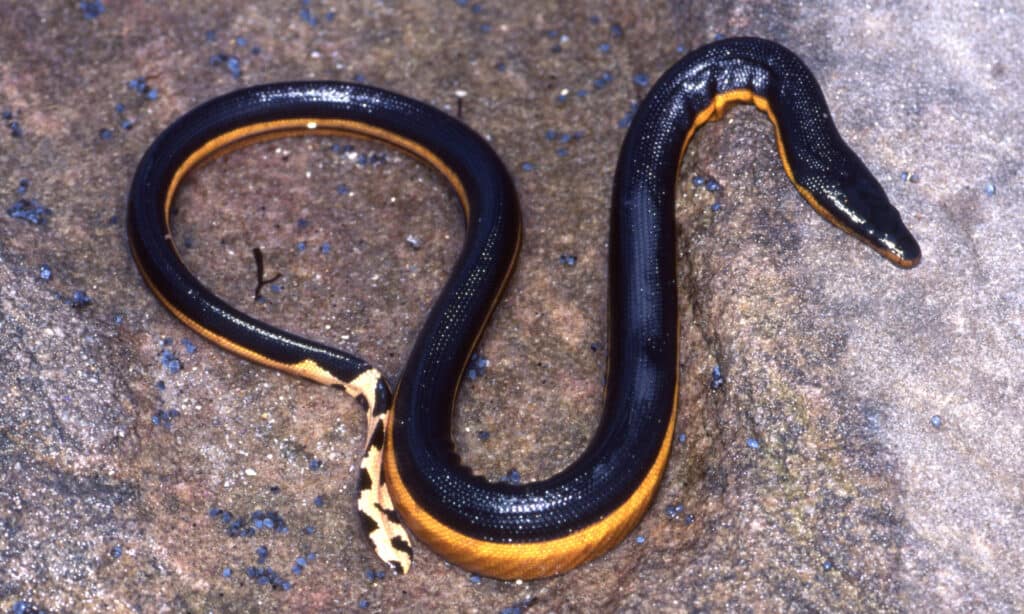We all know humans cannot go without water for longer than three days, but how long can snakes go without water? As it turns out, there is not a universal answer. Some snakes might only survive a day without, and others can go up to several months without a drink. Location, physical adaptations, and age of the snake can all affect the length of time they can survive without hydrating.
Continue reading to learn more about the factors that affect how long a snake can go without water.
How Often Do Snakes Need Water?
Generally, you should have fresh, clean water available for your pet snake at all times. Keep in mind that just because it’s available does not mean they will drink. Snakes don’t need a ton of water to stay hydrated. On average a pet snake will be able to go without water for about a week. Any longer than 10-14 days without water, you’ll risk dehydrating your pet, which can lead to other issues like illness or even death. Always do thorough research on the needs of the specific species of snake you have.
Snakes found in the wild have to be more self-sufficient and have their own ways of figuring out how to get fresh drinking water.
Desert-Adapted Snakes

Desert and marine snakes both go through their own challenges in obtaining fresh water.
©iStock.com/Banu R
Snakes that are accustomed to living in the desert, like many species of rattlesnakes, have appropriate adaptations. On average, a rattlesnake can go without water for 200 days. One of the things these snakes can do is collect rainwater on their scales. The snake will then drink that water off their body one drop at a time. Desert snakes like the western diamondback rattlesnake (Crotalus atrox) will flatten their body and coil up to maximize the amount of water that can be collected as well as to facilitate drinking. The scales seem designed for this purpose. They feature “microchannels” to make the collection of water more efficient. Other species of desert snakes also have this essential adaptation. If it weren’t for these microchannels, the water would slide right off.
The rattlesnake is not afraid of inclement weather on the other side of the spectrum, either. It will come out of its den in the later winter months to collect sleet or snow on its scales to get a drink of water. The western diamondback lives in states in the American Southwest, where a megadrought has been wreaking havoc. Given that this drought has lasted over 20 years, it’s safe to say water is extremely rare and hard to come by in the deserts of this region. For this reason, it’s no surprise snakes will come out into harsh conditions for the chance to rehydrate.
Fortunately, much of the water they need to live comes from the small mammals they eat.
Water-Adapted Snakes

Yellow-bellied sea snakes can lose nearly 20% of their body mass from dehydration without suffering.
©Ken Griffiths/Shutterstock.com
Surprisingly, many marine snakes can also go a long time without water. Even though species like the yellow-bellied sea snake (Hydrophis platurus) spend around 90% of their lives in or by water, this water is undrinkable. Snakes don’t drink saltwater, so their only chance at getting hydrated is lapping up rainwater when available. There’s a short period when the rainwater has not yet mixed into the salty sea, so this layer of fresh water is ripe for consumption. The yellow-bellied sea snake might go up to seven months without water. They can survive in this state of dehydration and need to reach a certain “dehydration threshold” to drink fresh water.
In addition to the lack of freshwater, the saltwater they traverse will slowly dehydrate them, too. This might be why they’re not intent on drinking as much as you’d think. Constantly remaining in a state of dehydration can make for a less sensitive response to thirst.
What are the Symptoms of a Dehydrated Snake?
If your snake is shedding in broken pieces, this is an indicator of dehydration. Ideally, snake sheds will come off in one, unbroken piece. Other symptoms of a dehydrated snake include:
- Receding eyes
- Lethargy
- Reduced appetite
- Wrinkled, brittle, or dry skin
- Constipation
If you suspect your pet snake is suffering from dehydration, there are some things you can do to help. Firstly, make sure there is fresh water available. Water without chlorine is best, so use filtered or purified water for your scaly friend. Some snakes need a bit of encouragement to drink. To do this, gently place their head in front of their water dish. Alternatively, you can drip a few drops onto their snout. This might stimulate their interest or at least get them to drink a few drops off their nose. Since snakes don’t drink a ton of water, a little bit can go a long way.
Be sure the environment is right: this means double-checking the temperature and humidity in their enclosure and making sure it’s correct for the type of snake you have. More frequent misting or giving a larger dish for the snake to soak in can help. If nothing is working, the lack of interest in water could be a sign of some other issue. Consider taking your snake to a vet with experience in reptiles to get to the bottom of it.
Final Thoughts
Snakes that live in humid areas will need to drink more frequently, and those that are made for dry environments can survive with less. Temperature can also play a role, similar to how humans are typically thirstier on hotter days. However, snakes are well-suited to their respective environments and are another prime example of how well animals adapt to their habitat, no matter how odd their adaptations might be.
The photo featured at the top of this post is © PhilBilly/iStock via Getty Images
Discover the "Monster" Snake 5X Bigger than an Anaconda
Every day A-Z Animals sends out some of the most incredible facts in the world from our free newsletter. Want to discover the 10 most beautiful snakes in the world, a "snake island" where you're never more than 3 feet from danger, or a "monster" snake 5X larger than an anaconda? Then sign up right now and you'll start receiving our daily newsletter absolutely free.
Thank you for reading! Have some feedback for us? Contact the AZ Animals editorial team.






